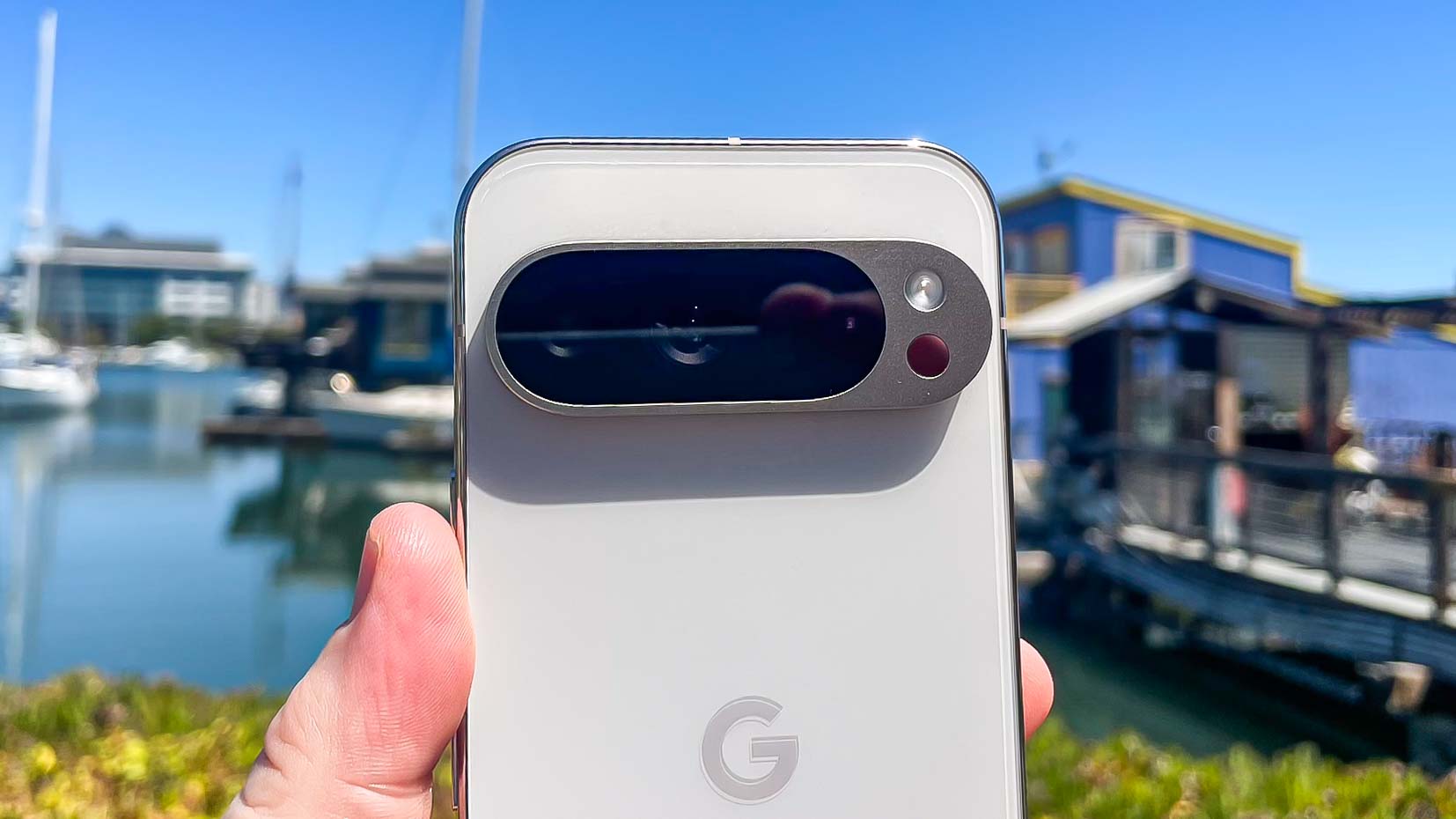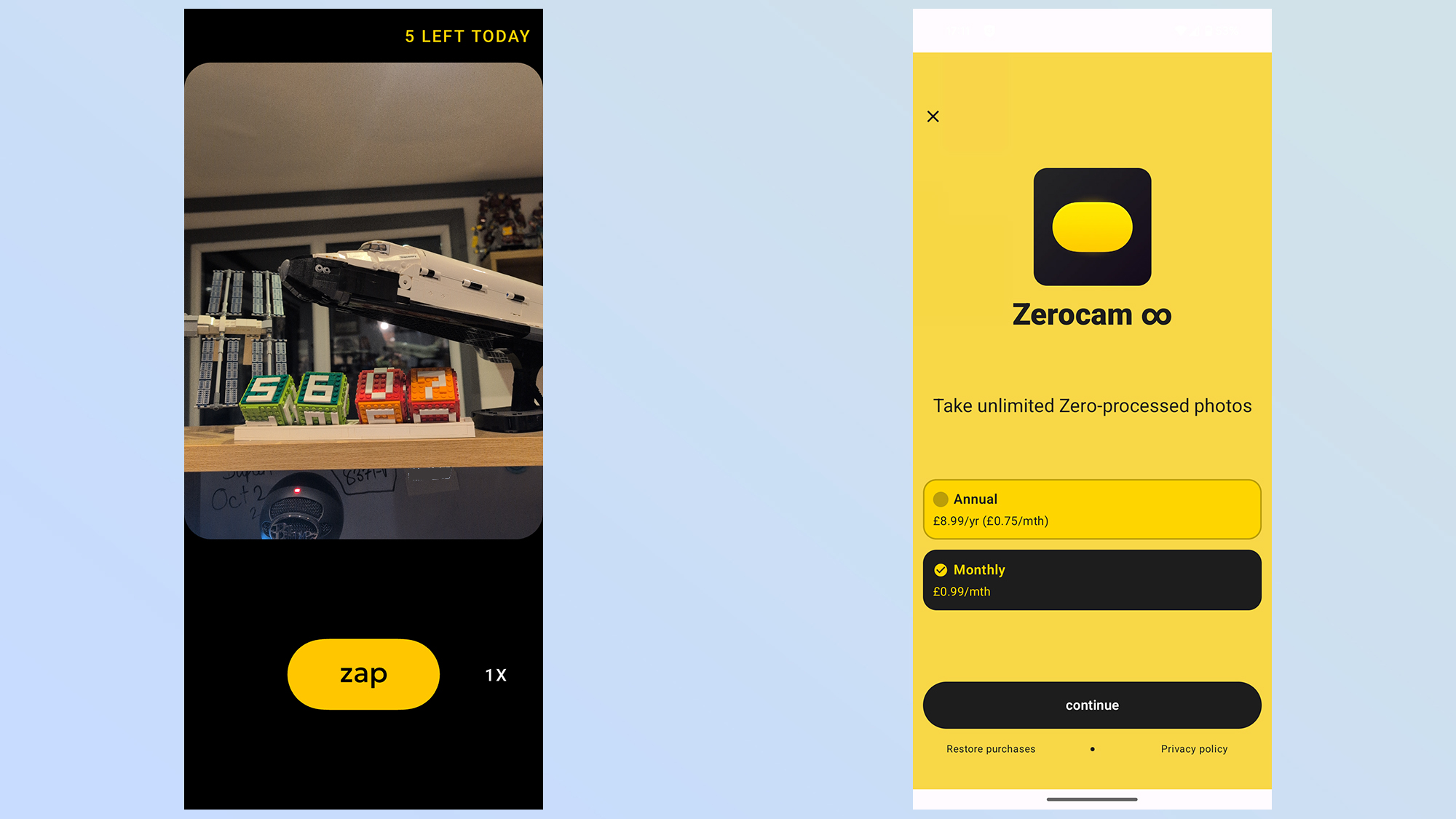I tried this 'zero-AI' app on the iPhone 15 Pro Max and Pixel 9 Pro to see how good the cameras actually are
How much does stripping out the AI and image processing change things?

Modern smartphones do a lot more than point-and-shoot. The hardware can offer a lot, but the actual photos you get will be dependent on whatever kind of processing is involved behind the scenes. Computational photography is the official term, and thanks to the increase in AI availability the last few years have seen it become more important than ever.
Then a few weeks ago I came across Zerocam, the self-proclaimed “first anti-AI camera”, promising absolutely zero post-processing aside from some “subtle color grading”. Simply point, shoot and you’re done. This got me wondering how Zerocam would compare to the stock camera apps on modern phones, so I decided to give it a try.
Zerocam is available on Android and iOS devices, so I’ve employed the Google Pixel 9 Pro and the iPhone 15 Pro Max to compare the results. My testing involved taking 2 photos on each phone at a time — one regular, and one on Zerocam.
How does Zerocam work?

The most immediate thing I noticed about Zerocam was that it is about as minimalist as you can probably get with a camera app. It seems as though zero processing also means zero anything else. All you have on screen is a shutter icon that cycles through different action words, a zoom indicator and a note telling you how many photos you can take that day.
Yes, there is a limit, because Zerocam is a subscription-based app. You get to shoot 5 free photos everyday, and if you want more you’ll have to pay. How much depends on whether you’re on Android or iPhone, with the latter charging more. Android users appear to have to pay $1 month or $11 a year, while iPhone users need to pay $2 a month or $13 a year.
I’m not sure why an app that is technically supposed to do nothing thinks this is the best way to monetize. The free daily limit is also giving me some weird flashbacks of the days before I owned a digital camera. When film was king and you had hard limits on how many photos you could feasibly take. Yes, I did mess up a few times, and while it was my own fault for not paying attention it was still pretty frustrating.
The other weird thing I noticed was that the zooming capabilities were different between Pixel and iPhone. Both phones have the same level of magnification, including 5x telephoto and 0.5x ultrawide, and yet that wasn’t reflected in the app. The Pixel 9 Pro offered 1x and 2x magnification, while the iPhone 15 Pro Max could push it to 3x and then all the way back to 0.5x. Why? I don’t know, and it doesn’t make a whole lot of sense.
Sign up to get the BEST of Tom's Guide direct to your inbox.
Get instant access to breaking news, the hottest reviews, great deals and helpful tips.
Still the camera itself was super-easy to use. Line up your shot, activate the shutter, either on-screen or with the volume buttons, and you’re good to go. Photos are then saved to your photo gallery for easy access. The photos are saved as JPEGs on the Pixel and HEIC on iPhone — just like any regular photo you take.
From an ease-of-use standpoint, Zerocam does it all right. But I still can’t help but wonder why isn’t more functionality or settings control — especially since this is a premium app. Does that count as processing? I wouldn’t agree that they do, not all of them anyway, and it just feels a bit like a missed opportunity.
People don’t want AI in their images? That’s a valid choice, but at least give them the tools to tinker with the photo settings ahead of time. Especially if they're being asked to pay for it.
How do the photos compare to the official camera app?
While the Zerocam interface could do with being a little less basic, it all comes down to the quality of the photos. To do this I took a number of everyday photos in Zerocam on both iPhone 15 Pro Max and Google Pixel 9 Pro. These were then followed by the same shot in the standard camera app — or as close as I can get. Pets aren’t always cooperative models, and love to move around between shots.


In this photo of the tree you can see that the iPhone produced photos that are brighter with more vibrant coloring than what Zerocam produced. The Pixel ended up producing pretty similar results, though the images weren’t identical for obvious reasons.


Quality on the iPhone shots is pretty comparable, though the darkness on the Zerocam shot doesn’t do the tree any favors. On Pixel, however, Zerocam’s quality is noticeably lower than Pixel Camera. Perhaps that’s testament tohow well Apple has designed its cameras compared to Google.


It’s a pretty similar story with the photo of my dog lying in his bed in my spare room. Zerocam on the iPhone isn’t as bright, and the colors are more muted than the iPhone. However the final iPhone shot almost looks a bit overexposed, with the colors washing out a bit. In reality that scene was more of a middle-ground between the two.


Weirdly the results on Pixel were almost the opposite. Zerocam’s picture is more washed out and overexposed. Colors on the Pixel as a lot more vibrant in comparison, and probably closer to the actual room — though not quite. Thankfully the quality issue experienced on the tree hasn’t made a return here.


Obviously no post-processing means there’s no specialist low-light or night-sight modes on Zerocam. If you ever took a picture on your phone about a decade ago, without the flash, you’ll have seen plenty of pictures that look like Zerocam’s view of the church. It’s darker than it looked in real life, and the surroundings are just a little bit blurry — or at least it is on the iPhone. The Pixel photo is darker, but clearly my hand was held a little steadier when I took it.


The iPhone and Pixel cameras look almost like they’ve been taken at a totally different time of day. The building is a lot clearer, and it’s obvious that the camera has exploited the screen lights to make the shot look so much clearer. Though, admittedly, I feel as though the Pixel did a better job, with the iPhone making the church look like it should belong in Silent Hill.


With the dogs in the park things are back to the previous trends. This photo was taken at 2x magnification in both apps, and it’s obvious that the iPhone photo has brought back the brighter and more vibrant coloring compared to Zerocam. The quality isn’t fantastic on either shot, especially with those far-off details, but the iPhone phone is definitely a lot clearer than the one taken by Zerocam.


It’s a similar story with the Pixel. Those far-off details don’t look amazing, and the Pixel camera certainly didn’t do as good a job at photographing the grass compared to iPhone. But things are sharper compared to Zerocam which has left a haze over both my dogs — and the grass.


Now for the selfies, which wasn’t particularly easy because of Zerocam’s lack of front camera support. It's another thing that the developers should really be adding, because taking a selfie on a rear camera is really quite difficult — as I’m sure you can see on my face. It’s a similar story again, with Zerocam’s photo coming out darker and with slightly less vibrant coloring. Meanwhile there really seems to be something in my house that makes the iPhone wash out certain colors — including whatever shade my face qualifies as.


The Pixel results are interesting, because the Pixel camera shot actually looks darker than Zerocam. That hasn’t stopped Zerocam from washing out the colors a little bit, especially on the right side of the photo. There’s a lot more noise in there too, which isn’t ideal, though the quality is noticeably better than Zerocam’s selfie on iPhone.
Bottom line
Zerocam certainly doesn't take bad photos, but it certainly doesn't take better photos than the stock camera app. At least not on the iPhone 15 Pro Max or Pixel 9 Pro, at any rate. Some of them were pretty close in quality, while others weren't. So really this is only the kind of app that you'd want if you have a moral objection to AI and image processing happening to your photos automatically.
Unfortunately Zerocam's other failings mean that its pretty hard to recommend. Having to pay at least a dollar a month to take zero-AI photos seems crazy to me. Especially since the app's functionality is about as basic as you can get while still being able to take photos.
I can understand an appeal to having a purist photo gallery, but I imagine most of the people interested in that will want more than just point and shoot. Especially if they're being asked to pay a subscription for it.
More from Tom's Guide

Tom is the Tom's Guide's UK Phones Editor, tackling the latest smartphone news and vocally expressing his opinions about upcoming features or changes. It's long way from his days as editor of Gizmodo UK, when pretty much everything was on the table. He’s usually found trying to squeeze another giant Lego set onto the shelf, draining very large cups of coffee, or complaining about how terrible his Smart TV is.
-
ap717 "Perhaps that’s testament tohow well Apple has designed its cameras compared to Google." What kinda journalism is this?!? How bias can someone with Apple to even say that??Apple didn't "design" any of its cameras....they bought the sensors from either Sony or Samsung. Apple has better camera sensors than the pixels which is true...HOWEVER it's Google's software algorithm is what had made it superior or competitive to the iPhones (since they kept their same camera sensor for years). Granted Apple and other competitors have caught up in software, it should've been noted that Google is taken competitive pictures with lesser hardware. So what the writer SHOULD'VE said is "Perhaps that's a testament to how well GOOGLE has designed their camera algorithm/software compared to Apple."Reply
And FYI...there's a typo in your quote that I kept when quoting it -
pauljwells I agree. Google are quite open about the fact that their approach is "whole system" and the processing is essential.Reply
It's an interesting concept but where do you draw the line for processing? I don't think HDR should count; it's standard in some form on digital cameras for years and all of the observations about exposure look to me to be where HDR would have fixed everything.
If you really want an "AI-free" smartphone camera, check out the Sony Xperias.
